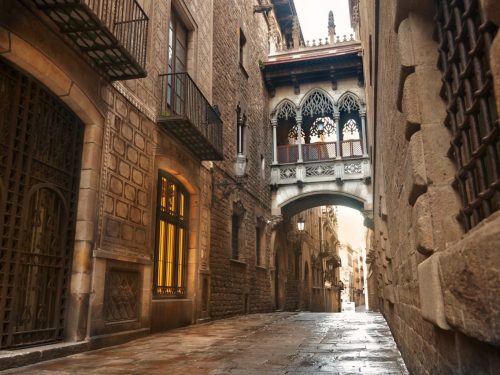 9 Great Things To Do in Barcelona’s El Born District
9 Great Things To Do in Barcelona’s El Born District
Nestled between the Gothic Quarter and the beachy vibes of La Barceloneta, the Barcelona neighborhood of El Born is a unique blend of…
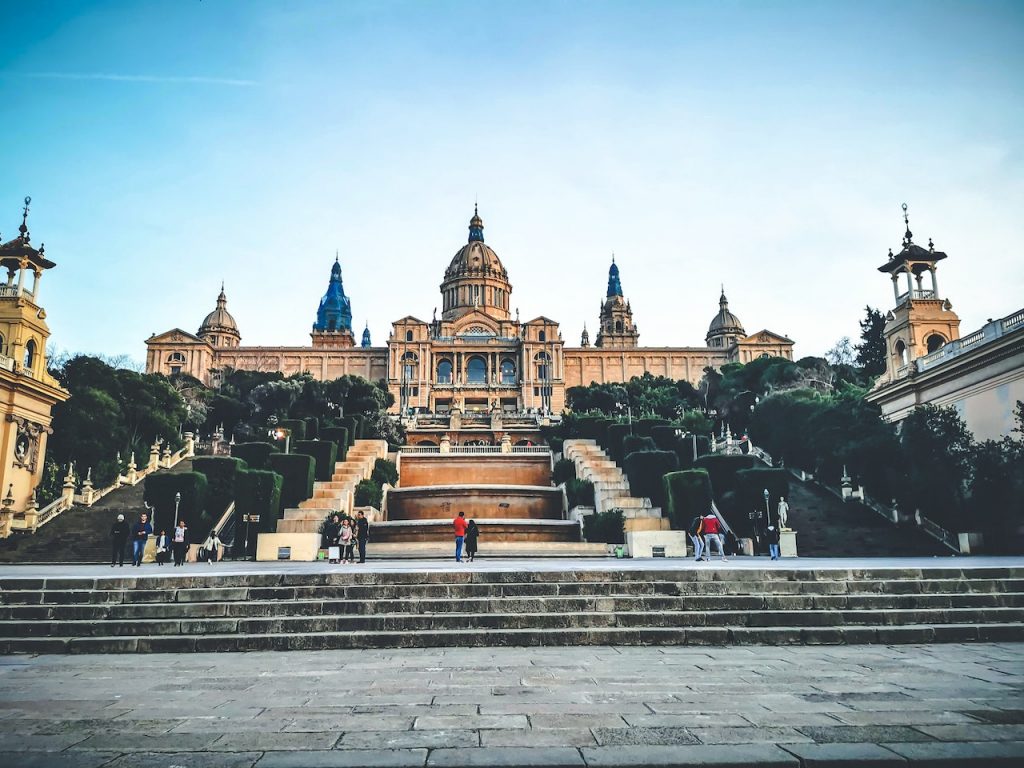
If you’re staying for a week in Barcelona, you could spend all your time at the Museu Nacional d’Art de Catalunya (the museum’s name in Catalan) and still feel like you’ve barely seen any of its 290,000 works — but that doesn’t mean that you shouldn’t try to see as much as you can.
Located on the slopes of Montjuïc and overlooking the Magic Fountain, the National Museum of Art of Catalonia (MNAC) is known for its vast collection of Catalan art that spans the Medieval period and early 20th century.
Whether you’re only interested in the highlights, spending time in the extraordinary Romanesque art section, walking around and taking pictures of the outside of the building, or waiting in the museum gift shop for your friend to finish their guided tour, this blog post will help you make the most of your visit.
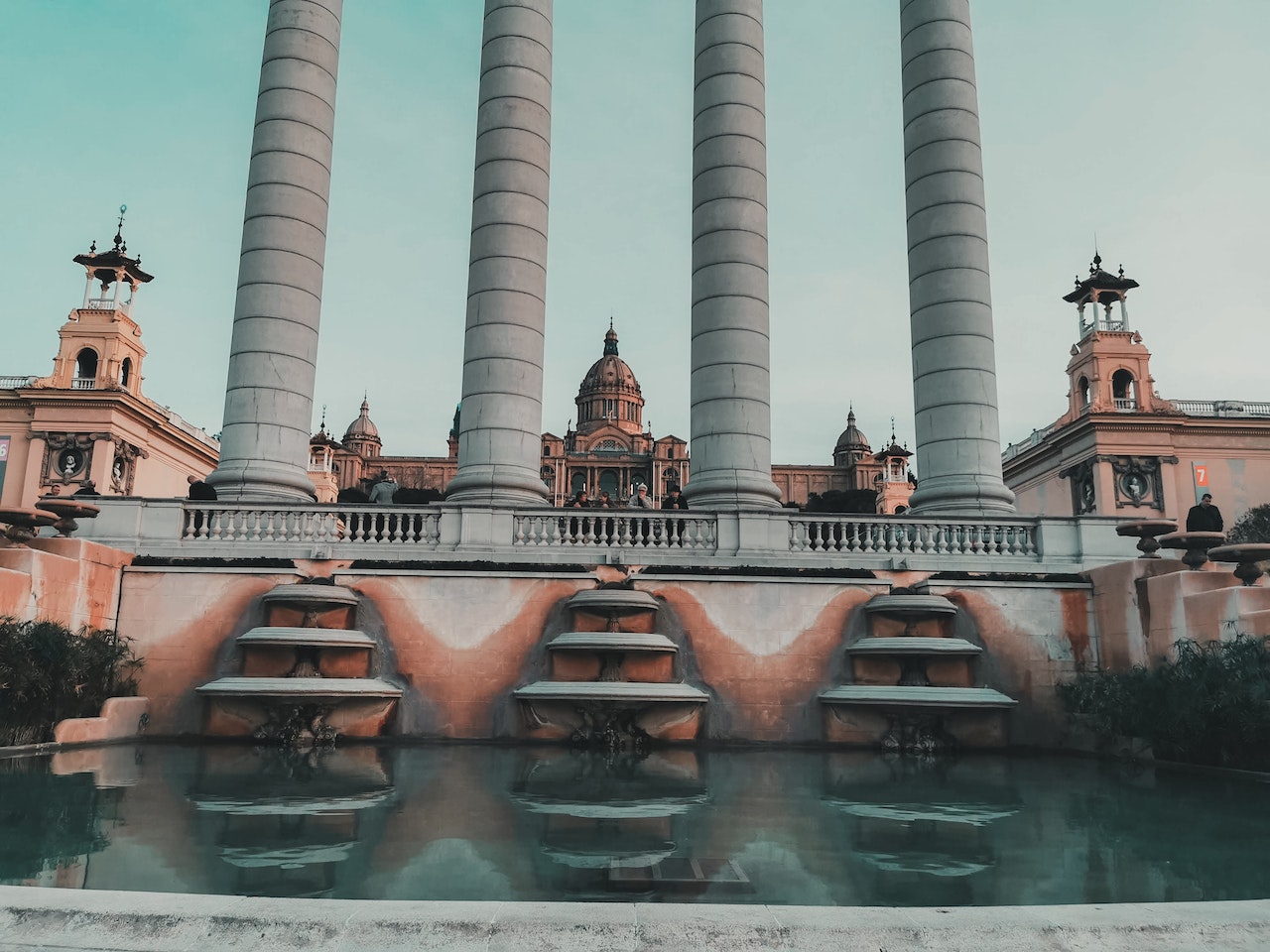
The Palau Nacional (or National Palace) was built on Montjuïc for the 1929 Barcelona International Exhibition, which was meant to promote the advancements in the region of Catalonia to the world as the 1888 exhibition had done for Spain (Ciutadella Park was even remodeled for the 1888 event).
During the exhibition, the space was dedicated to showcasing more than 5,000 works from across Spain. The National Palace first opened as a museum in 1934 with a collection of Medieval art, but it has gone through many variations on its journey to becoming the Museu Nacional d’Art de Catalunya you can visit today.
The building is just as majestic as the mountain it sits on, designed in a classical style and topped with a dome inspired by St. Peter’s Basilica in Vatican City.
Today, MNAC is a symbol of Catalan heritage and identity with its collection of Romanesque, Gothic, and Modern art from Catalonia, Spain, and beyond.
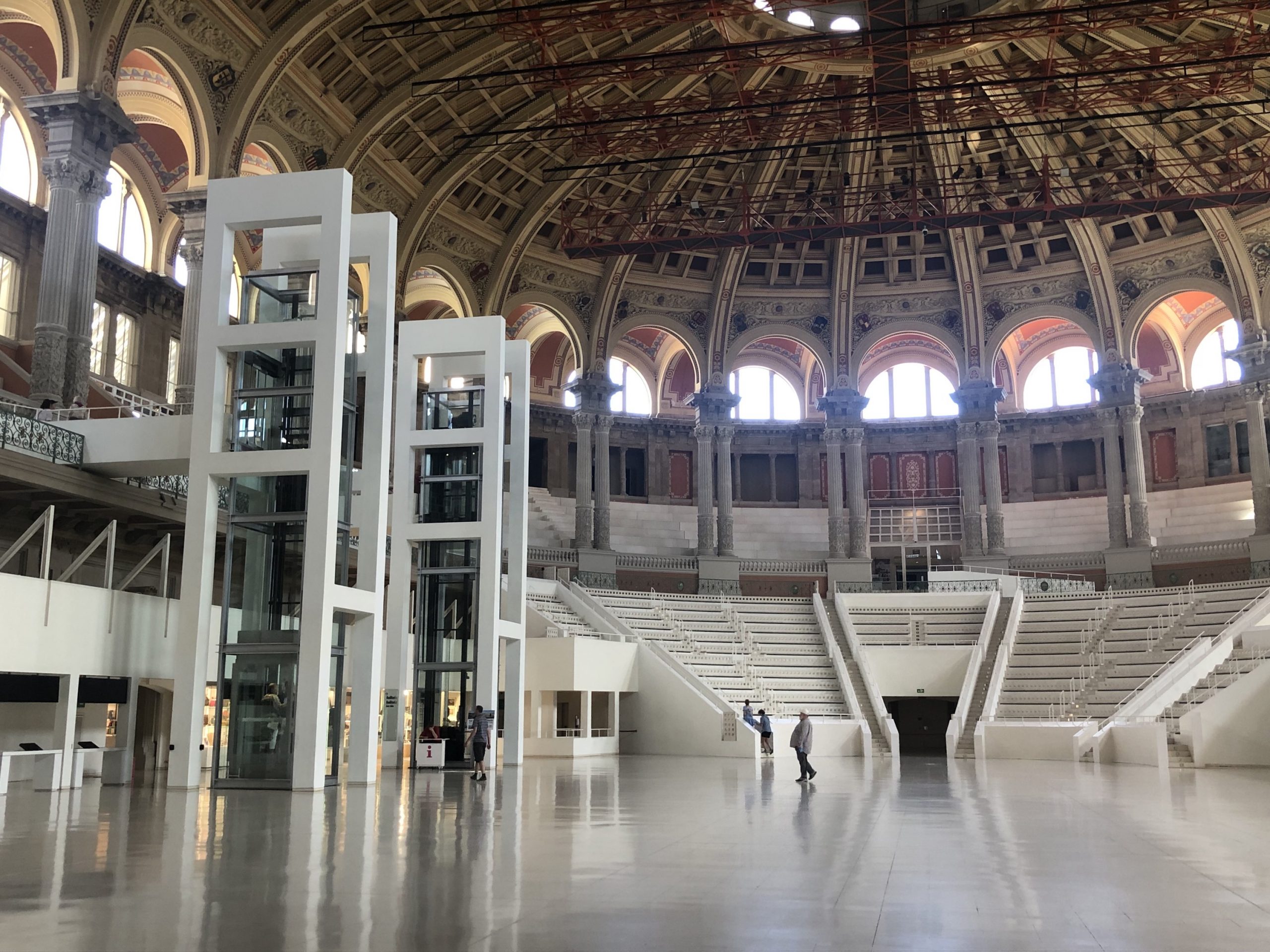
Visiting art museums the size of MNAC can be overwhelming. Where do you even start? But MNAC’s main collections are divided into four sections and are clearly marked in the lobby, so it’s easy to choose where you want to begin and end your visit.
You can move through the museum chronologically, starting with the Romanesque and Gothic Medieval rooms, moving onto the collection of Renaissance and Baroque works, and finishing in the Modern Art section. Or you could see it all in reverse — it’s up to you!
Here are some highlights from each section to help you plan your visit.
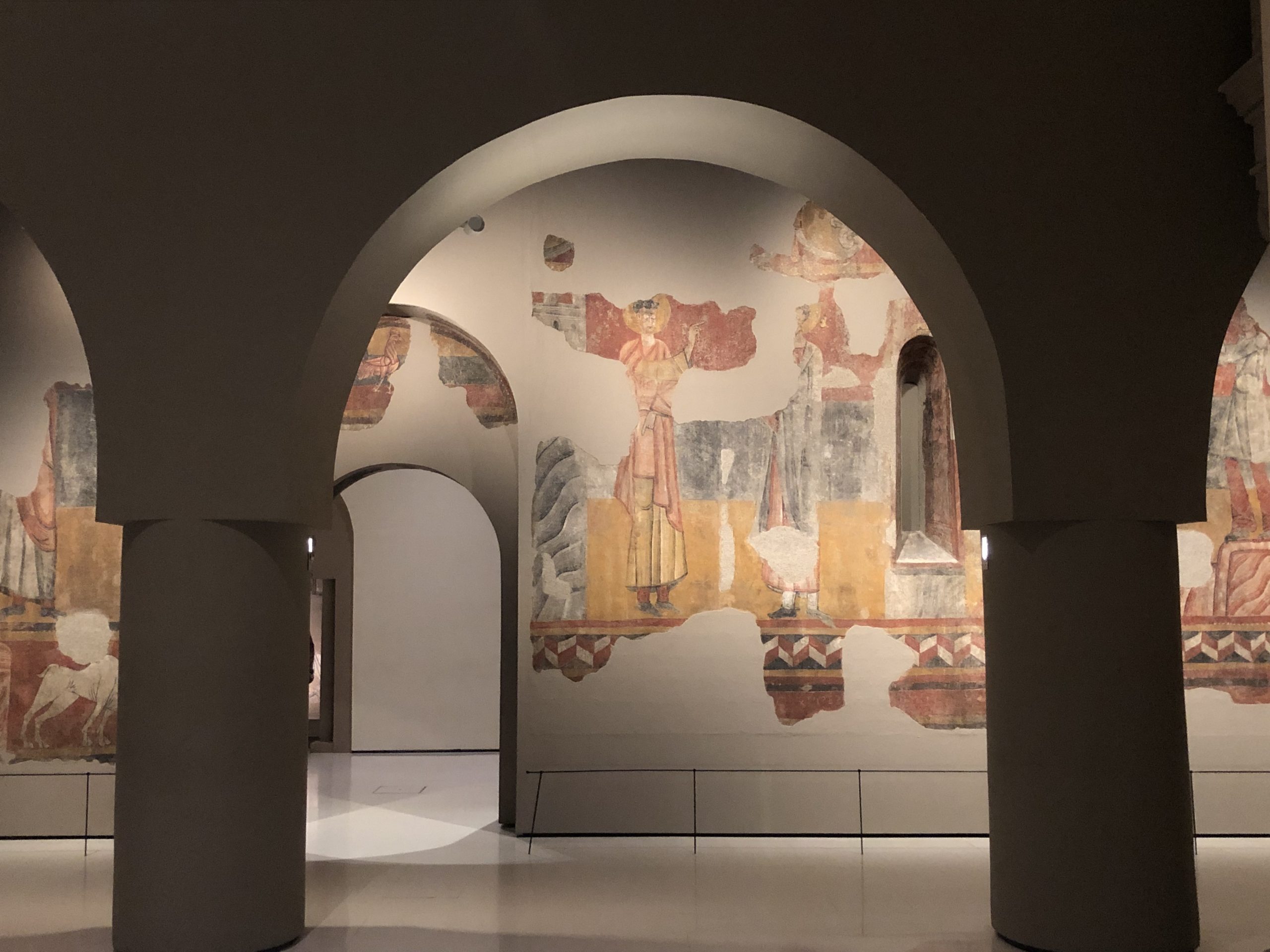
If you see only one thing at MNAC, make it the collection of Romanesque frescoes that were found in abandoned Catalonian churches in the early 20th century and restored by the museum.
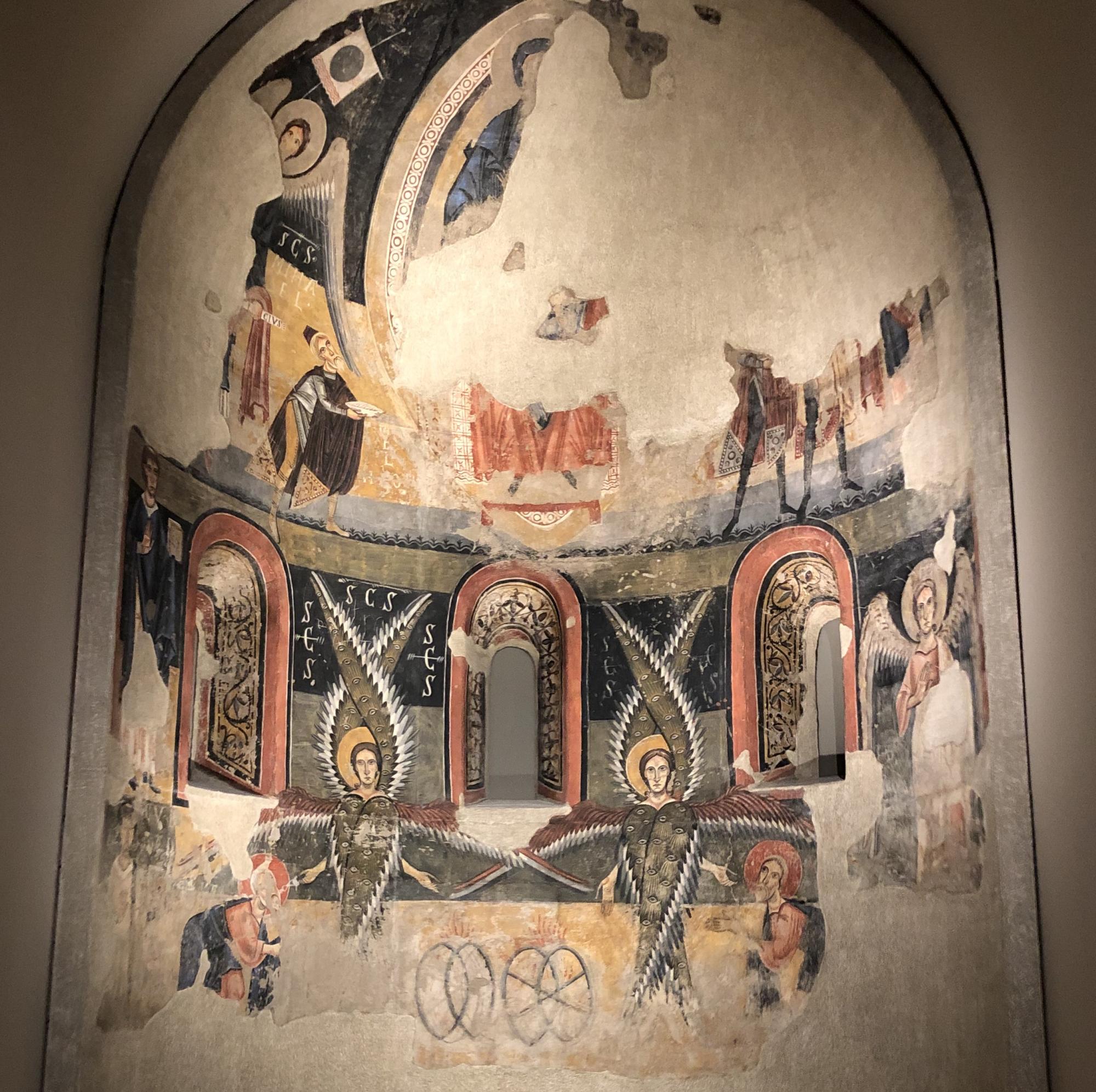
The frescoes are displayed how they might have been when they were first uncovered — mostly fragments of the frescoes survive — which helps transport you from the pristine rooms of the museum to the small medieval churches where they originated.
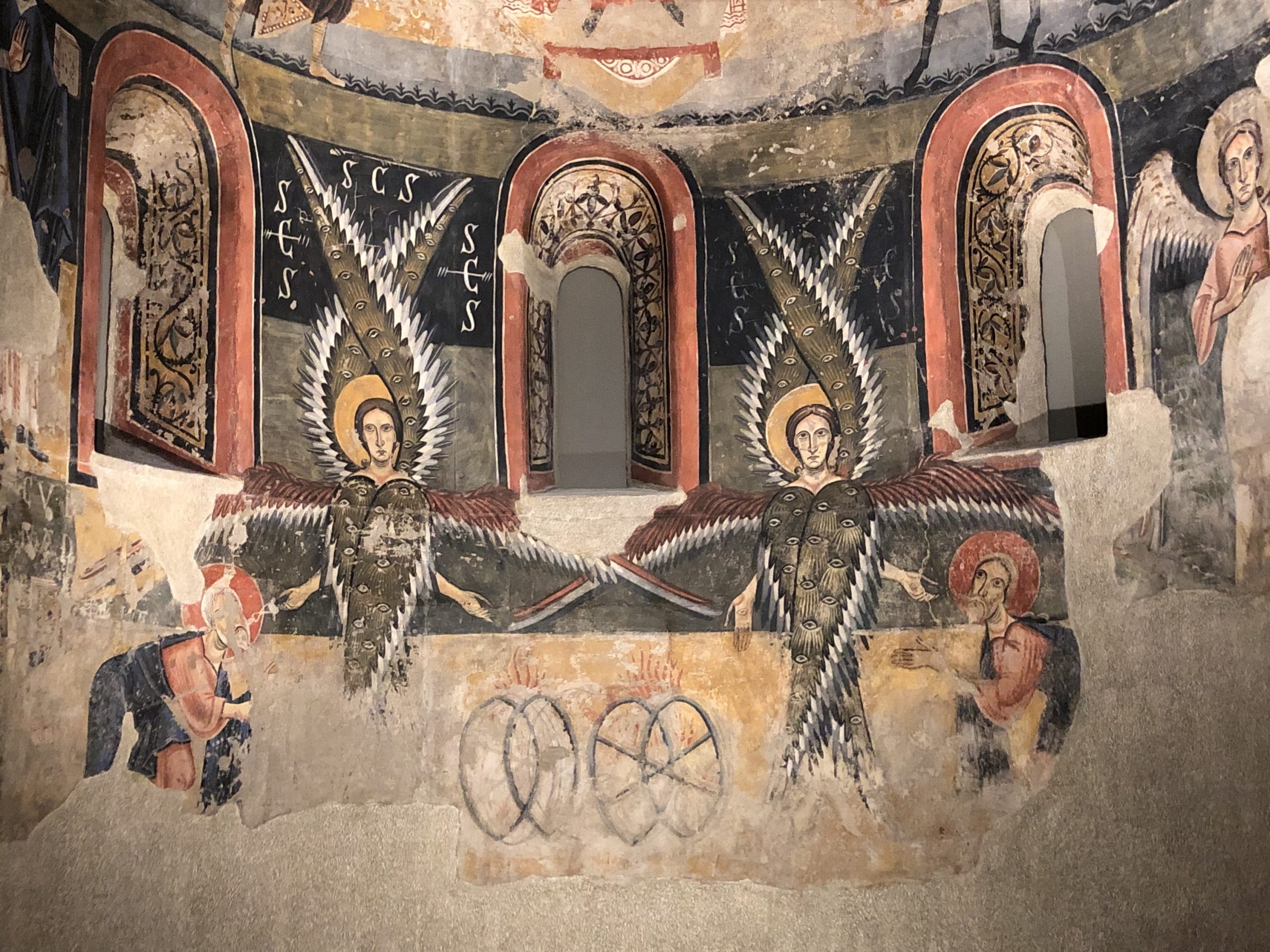
The National Museum of Art of Catalonia’s Romanesque art collection is one of the largest and most impressive in the world, and it should top your list of things to see on your visit.
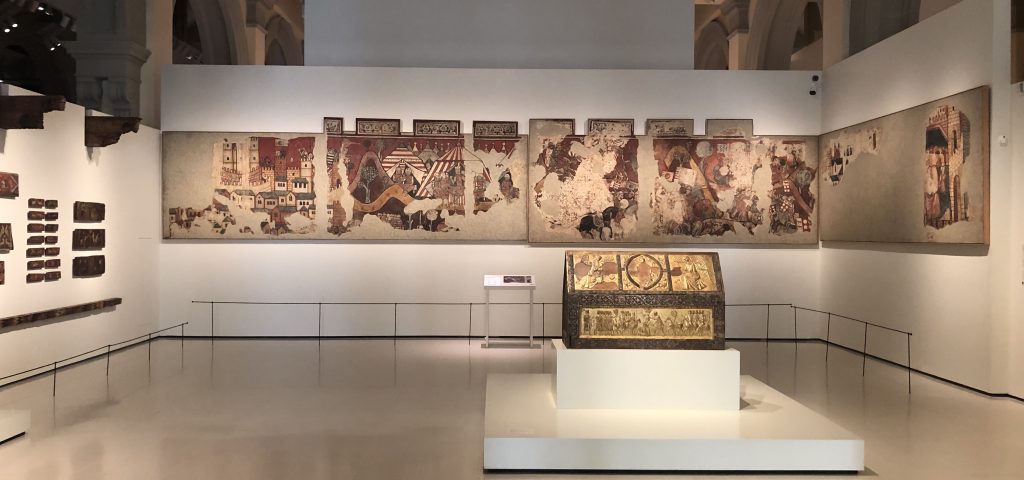
What I found most striking about the Gothic art collection are the many forms this art takes — sculpture, wood carvings, paintings, altarpieces. And MNAC displays these works in cream-colored rooms, which blends with the light shades used for the many Madonna statues but makes a startling contrast for some of the vibrantly painted wood panels.
These rooms display works from the 13th through 15th centuries and primarily feature works from Catalonia, Aragon, and Valencia, three regions that were ruled by the Crown of Aragon from the 12th century until it was abolished at the end of the War of Spanish Succession (1701-1715). The Gothic section really gives you a complete picture of the type of art being produced in the region at that time.
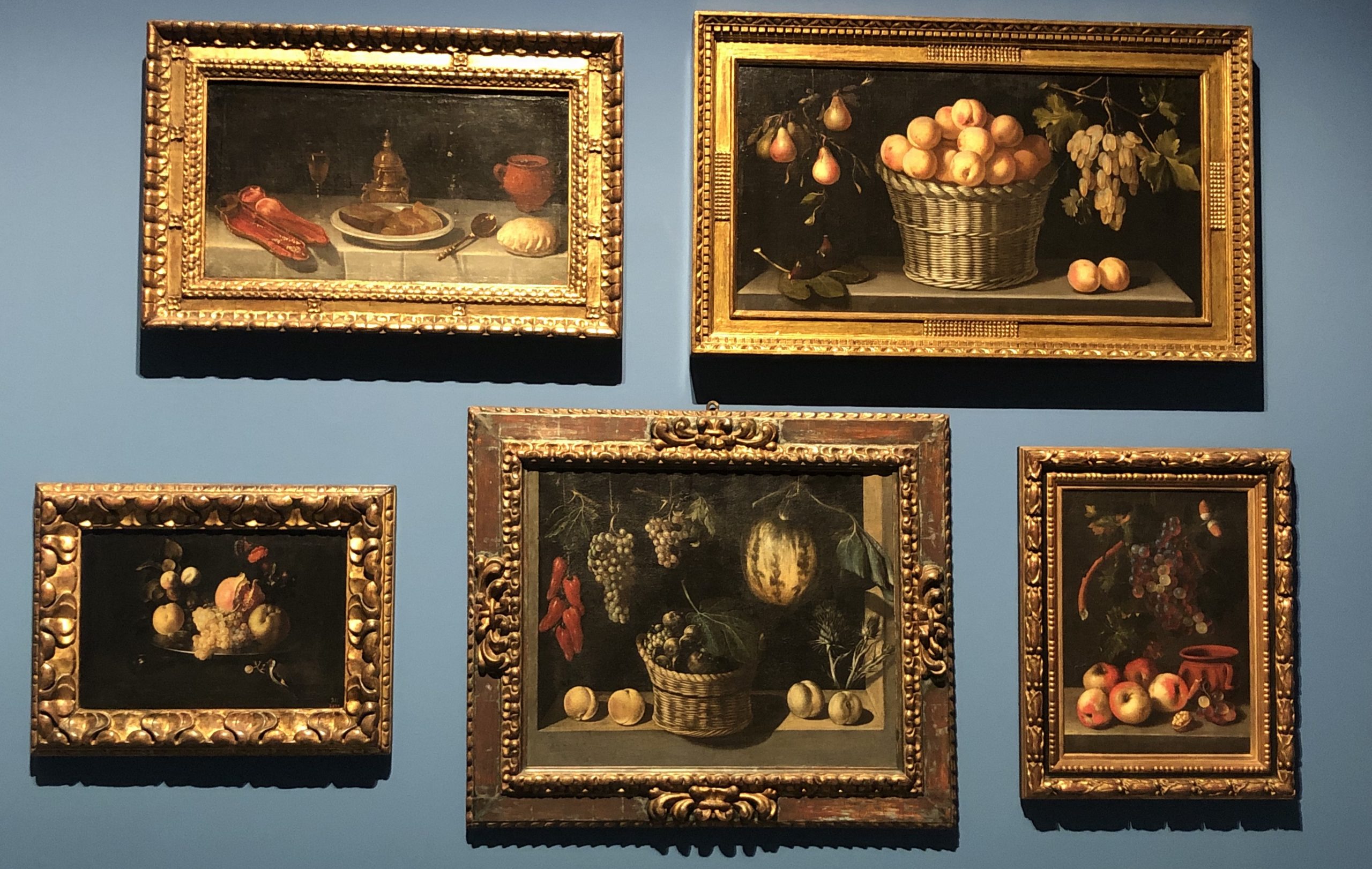
In MNAC’s Renaissance and Baroque section, you’ll find the works of internationally- renowned artists like Titian and Rubens alongside art from masters of the Spanish Golden Age like Diego Velazquez (“Saint Paul”) and Aine Bru (“Saint Candide”). The Spanish Golden Age is a period where Spanish arts and letters flourished. In painting and sculpture, artists began to explore more intellectual themes and ideas in their work.
What’s unique about the collection is that it’s largely made up of the Cambó Bequest and Thyssen Bornemisza Collection, which include important works of Catalan heritage as well as paintings from other parts of Europe. The Cambó Bequest, in particular, is one of the most generous donations the Museu Nacional d’Art de Catalunya has received, including 50 paintings from masters of the 14th through 19th centuries.
Unlike the Gothic section, the museum’s Renaissance rooms display works against deep blue and purple walls, which provides a richer and warmer experience as you walk through the exhibit. Perhaps the change from white walls to blue is meant to symbolize the rise of a new age of artistic expression.
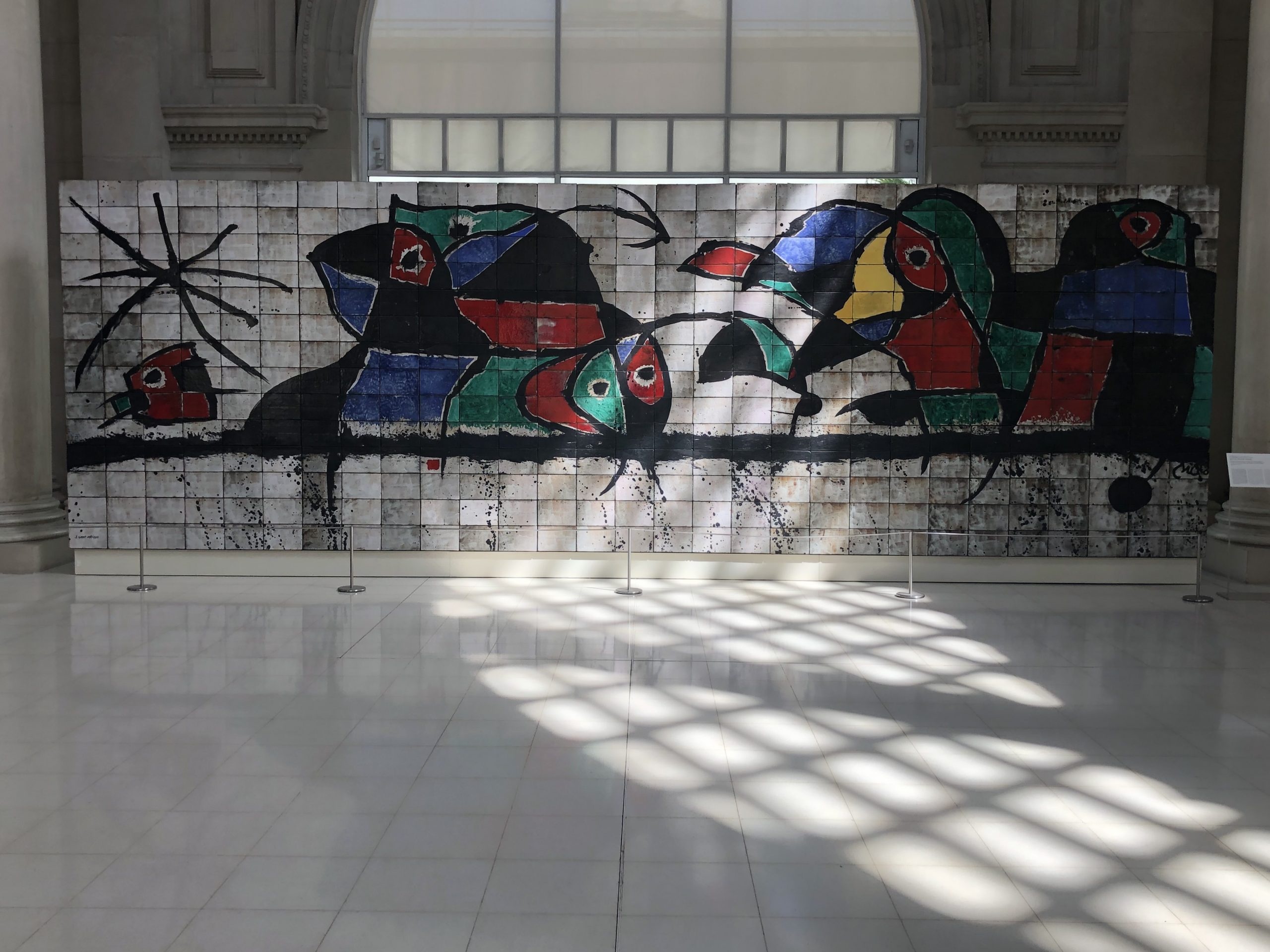
Modernisme (“modernism” in Catalan) is an important artistic movement with an aim to reclaim and reinvent Catalan identity. It found its greatest form of expression in architecture, but painting and other decorative arts also adopted modernist principles.
NAC’s collection of Spanish modernist art includes paintings from Ramon Casas (“Ramon Casas and Pere Romeu in a Car”), furniture crafted by Antoni Gaudí (“Confident”), and sculptures from Josep Llimona (“Heartbreak”).
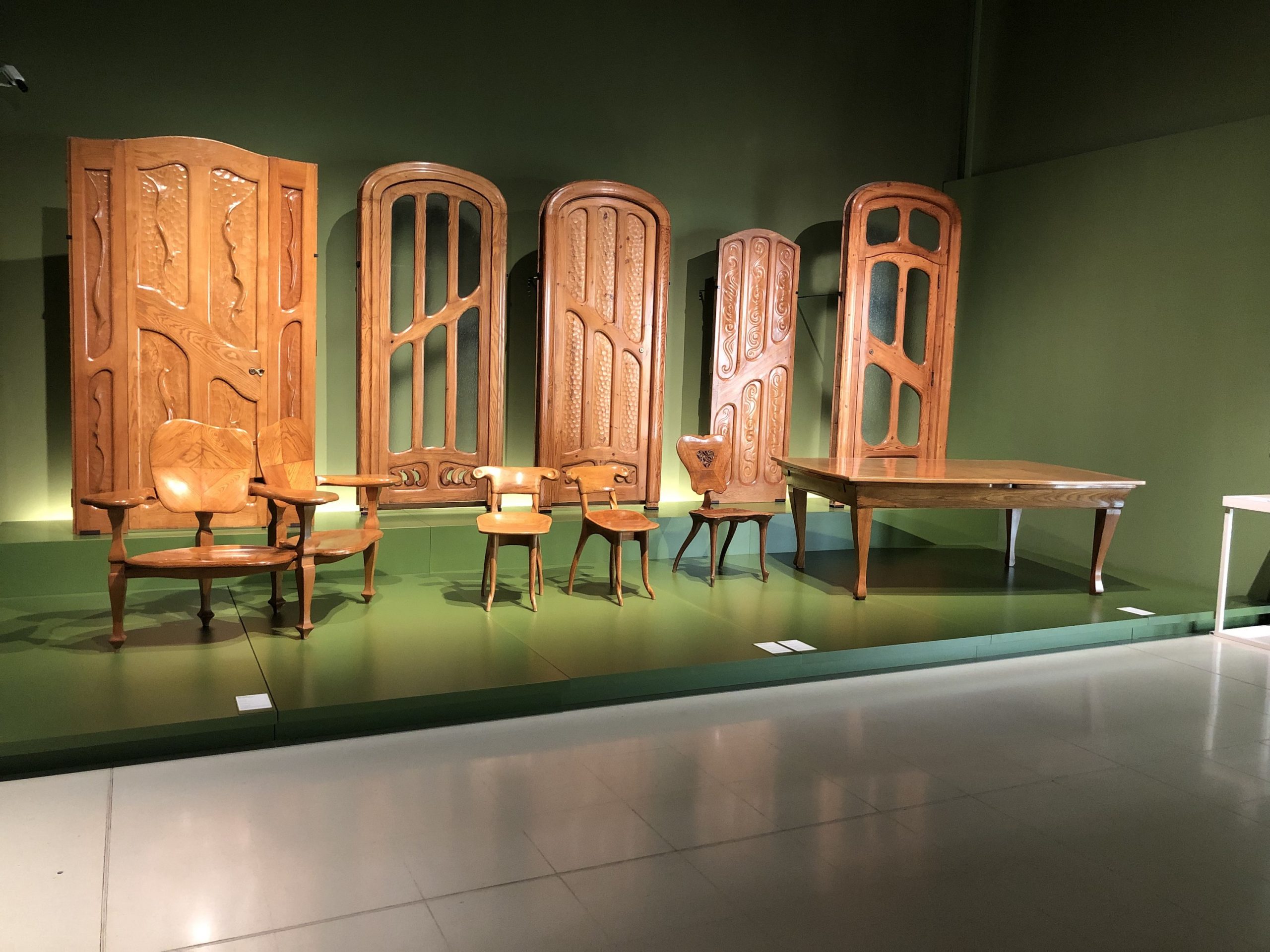
Beyond the art exhibits, you can dine, shop, visit the rooftop, and tour the statues and architecture outside.
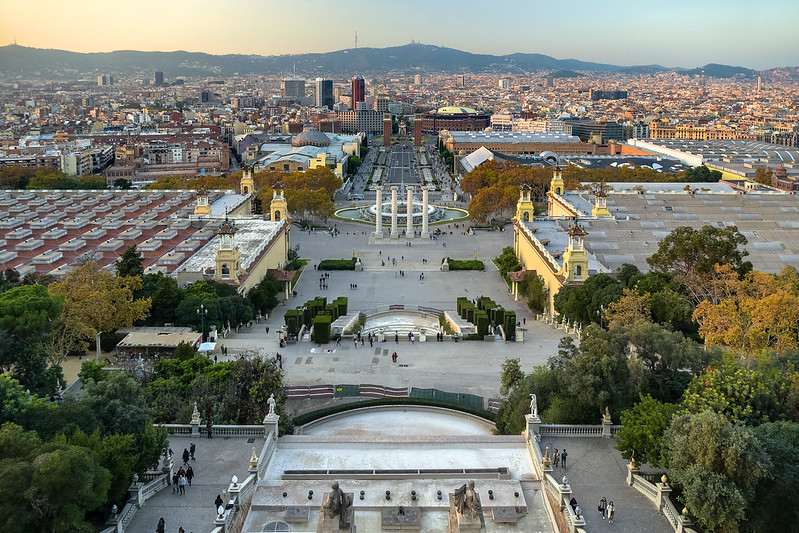
In Barcelona, we always love a good panoramic view, and the one from the Museu Nacional d’Art de Catalunya is among the best.
It has not one but two viewpoints open to the public. Just head to the rooftop terrace for 360-degree views of Montjuïc and the skyline of Barcelona. You can see the Sagrada Família, the Olympic Village, the Torre Glòries, and more.
Admission is included with your museum ticket, or if you’re not planning to visit the rest of the museum, you can purchase a separate rooftop entry ticket for just €2.
Looking at art always makes me hungry, and the National Museum of Art of Catalonia has great options for feeding your stomach as well as your mind.
If you’re looking for a caffeine boost or light snack between galleries, you can stop at the cafe, located in the Oval room on the lower level, or terrace bar, found just outside the entrance to the museum, overlooking Montjuïc.
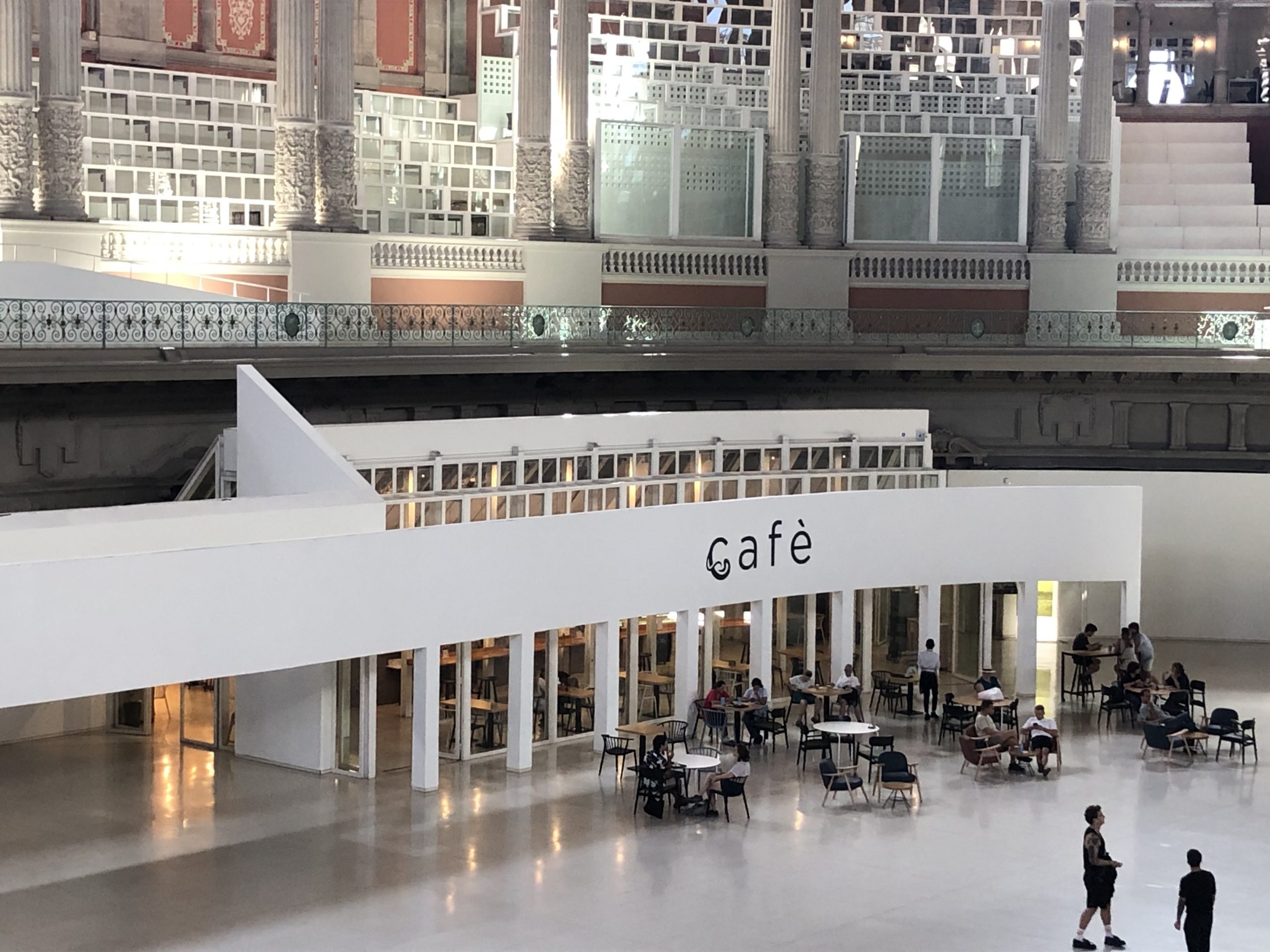
For something more substantial, Oleum Restaurant serves traditional Spanish dishes and other fare to satisfy any appetite. Located in the former Throne room of the Palau Nacional, you’re guaranteed a delicious meal with a stunning view.
Raise your hand if you can resist a museum gift shop? I’m going to guess this applies to no one. Whether you’re buying a souvenir for a friend or treating yourself to something nice, the museum shop has a wide variety of books, stationery, ceramics, and other items inspired by works in the museum.
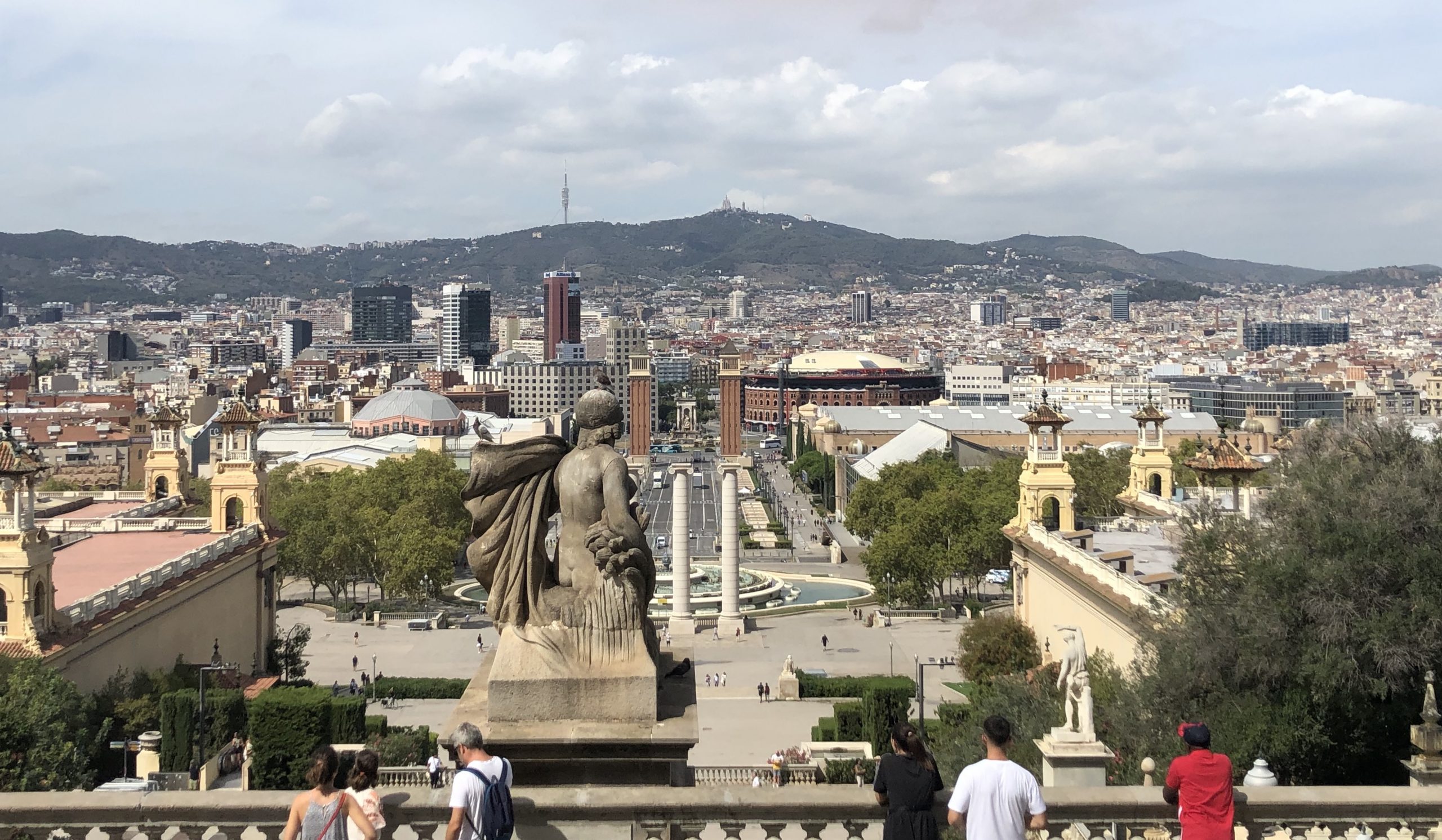
This is a great way to experience the museum when it’s too crowded — just stay outside and look at the many statues, the great dome inspired by St. Peter’s Basilica, and the towers modeled after the Santiago de Compostela Cathedral in Galicia.
Here’s some practical info to help you plan your trip to this popular Barcelona art museum. We’ve gathered the most common questions (and their answers) so you can spare yourself an extra Google search.
Museum hours vary by season, but MNAC is usually open every Tuesday-Saturday and on Sundays. Every Saturday at 3 p.m. and the first Sunday of the month are open days with free entry, but reservations must be made in advance.
There’s a ticket for every type of museum visit: General admission for €12, the Mey Rahola ticket to the exhibition rooms for €4, the basic ticket that allows access to the building and terraces for €2, and the MNAC visit pack for €18. Adults over 65 and children under 16 always get free entry.
The museum is easy to get to by car or public transportation. You’ll find directions on MNAC’s website.
It’s also set up to help people with physical and sensory disabilities easily navigate the museum.
Prefer a pre-planned museum itinerary? The National Museum of Art of Catalonia has you covered. They have a range of virtual itineraries based on themes to choose from, which are sure to enrich your visit.
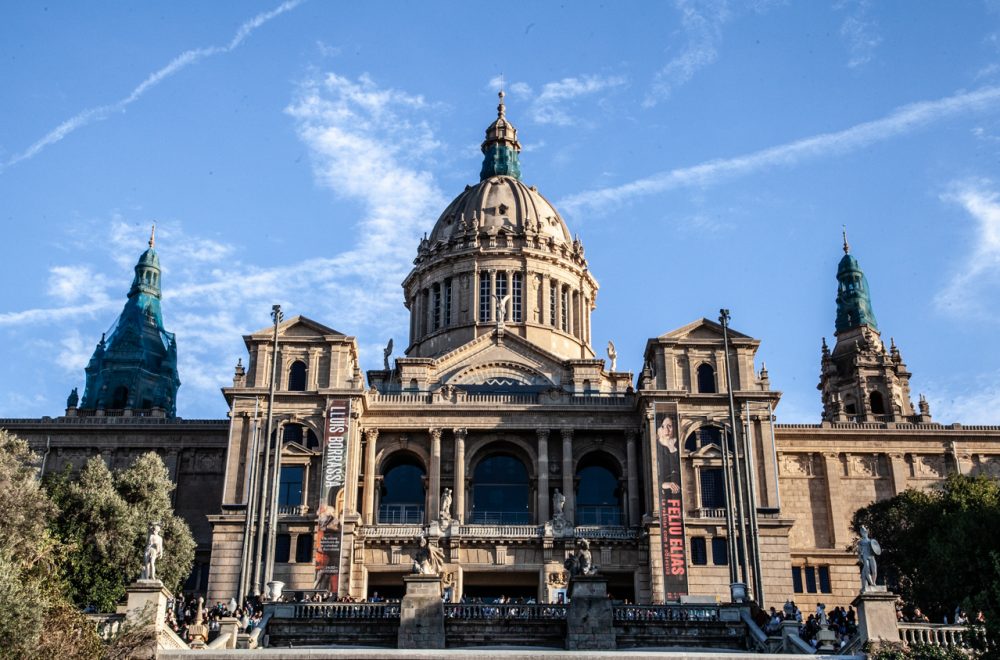
After spending the morning at MNAC, why not explore all the magical sites of Montjuïc? Our guided Montjuïc walking tour takes you to all the highlights including:
When you visit the National Museum of Art of Catalonia and combine it with our Montjuïc Walking Tour, you get to experience the best of Catalan culture all in one place.
Our tour ends at the museum, so it’s perfect if you want to visit the museum after your walk around Montjuïc. The museum is open till 6 p.m. in winter and 8 p.m. in summer if you’re visiting Tuesday through Saturday, so you’ll have plenty of time to explore the exhibits after the tour on those days.
 9 Great Things To Do in Barcelona’s El Born District
9 Great Things To Do in Barcelona’s El Born District
Nestled between the Gothic Quarter and the beachy vibes of La Barceloneta, the Barcelona neighborhood of El Born is a unique blend of…
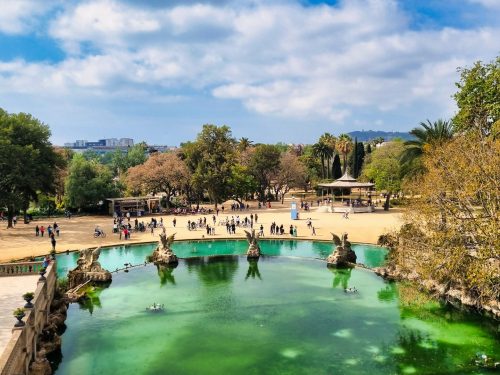 What To See and Do in Ciutadella Park, Barcelona’s Largest Urban Park
What To See and Do in Ciutadella Park, Barcelona’s Largest Urban Park
If you happen to be in La Ribera passing a few hours at the Museu Picasso or Museu Moco, you’re no more than…
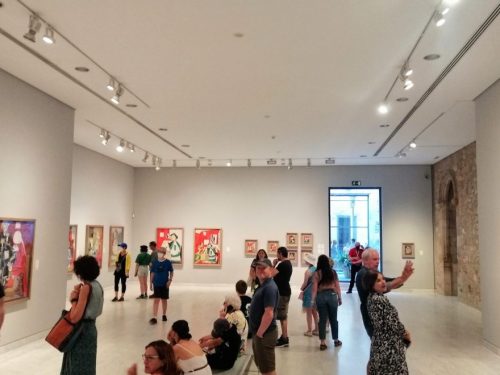 How To Visit the Picasso Museum in Barcelona
How To Visit the Picasso Museum in Barcelona
When you think of Pablo Picasso, you might think of 1920s Paris as depicted by Hemingway in “A Moveable Feast” and Woody Allen…